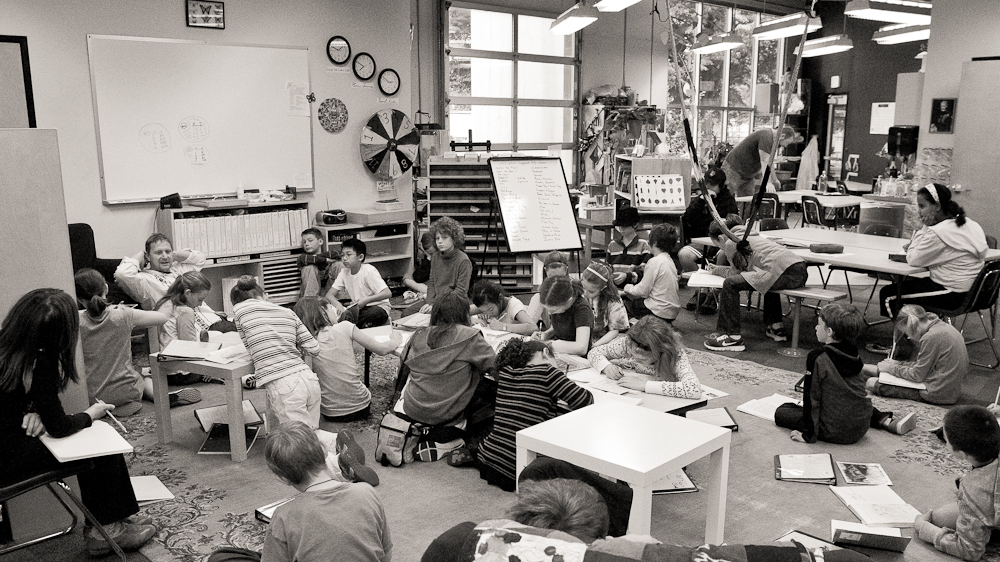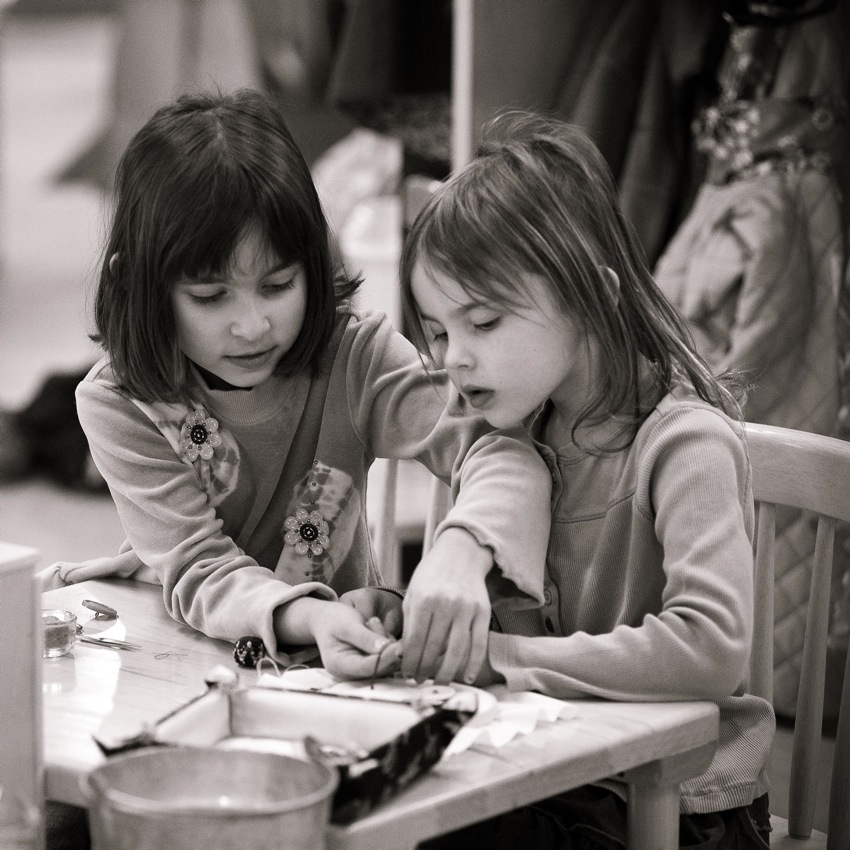October 29, 2022
On a recent morning, I gave an educational consultant a tour of our Montessori school. She was visiting local schools, familiarizing herself with their operations, and introducing herself and her services. She specializes in creativity and in developing individualized programs for TAG (Talented and Gifted) students to supplement their learning experiences outside of school hours.
First, I settled her in to observe in a Children’s House classroom. When I returned twenty minutes later to escort her to an elementary class, she asked, “Are those really two-and-a-half to six-year-olds? It was so peaceful and productive!” I pointed out a few of the many activities in which children were engaged. “This boy is writing sentences with cut-out letters. That little girl is ordering blocks and prisms using visual discrimination of dimension. The girl beside her is arranging flowers in a vase to beautify the classroom. The group of three on the rug is doing an addition problem with decimal system materials. You probably recognize many of the practical activities such as sewing a button, cleaning the window, and learning to buckle and tie. I hope you also noticed the many expression activities in use – the clay, easel painting, cutting, coloring, and collage.”
After 20 minutes of observing in an elementary classroom, I showed her the work journal of the 10-year-old seated closest to the observation chair. “This is where she records all of her activities throughout the day. You can see that today she arrived at 8:35 and resumed work on her Egypt report; at 10:00 she had a snack, at 10:30 she was invited to join a small group lesson on decimal multiplication and has been doing follow-up problems ever since.” Then the observer followed me to my office for a conversation.
She began by asking the questions typical of a first-time Montessori observer, then began to wonder out loud how her services would be useful in such a setting. “Let’s talk about creativity,” I suggested, “for I think you’ll find that everything you observed this morning was essentially creative in the truest sense of the word.”
“First, let’s consider the Children’s House class. You noticed that the expression activities all respect the child’s innate creativity. These were not ‘art projects with an adult-determined outcome. We teach children a variety of media but limit the lesson to technique, leaving the child free to explore. In each case any product created was a unique expression of that child. We are careful that our comments are non-judgmental. We might recognize the kinds of brush strokes, and the use of space or color, but we would stop there. You won’t find children in these classrooms producing artwork to please the adult, but to satisfy their own creative urges.

What you might not have recognized was the creativity involved in the child building with the blocks and prisms. She was using two materials simultaneously: the pink tower, which varies regularly in all three dimensions, and the brown stair, which varies in only two. While she has been shown on separate occasions one of the many ways to build each of these materials, the rest of the variations are left for her to discover on her own. On this occasion, she noticed the correspondence of the two materials in their two-dimensional aspect and has chosen to build them side-by-side, first as towers and then as stairs. But, no one showed her how to do this, nor even suggested it. She discovered it entirely on her own, using – guess what? – her creativity.
When you think about it, the entire environment was designed to allow freedom for that most creative of all acts – the self-construction of each individual child according to his/her own pattern and pace. That essential creative act, which began at birth and continued throughout their early childhood as they learned to walk, and speak, and care for themselves, continues here unabated in an environment full of the raw materials of self-construction and with the time and freedom to do this important work.
Now let’s consider the elementary child. In my experience, what TAG programs attempt to do is to pull the talented and gifted children out of class to have the experience of devising their own projects and progressing at their own pace, if only for a few hours a week. As you saw, Montessori children get to do these things every minute of every day! So, essentially what we have here is a Talented and Gifted Program all of the time, and one in which every child is considered talented and gifted, not just an elite few.”
So, it was with little hope that she left her card with me since obviously, her skills would be redundant here. But, I like to think that maybe she found the experience inspiring nonetheless and that perhaps the Montessori children had taught her just a little bit more about creativity.
